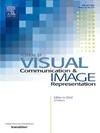弱光图像增强的无监督微调策略
IF 3.1
4区 计算机科学
Q2 COMPUTER SCIENCE, INFORMATION SYSTEMS
Journal of Visual Communication and Image Representation
Pub Date : 2025-05-24
DOI:10.1016/j.jvcir.2025.104480
引用次数: 0
摘要
低光图像增强(LLIE)算法的主要目标是提高在弱光条件下拍摄的图像的可见性,从而提高后续任务的性能。然而,由于实现策略的不同,依赖单一的LLIE算法往往不能一致地解决颜色恢复、降噪、亮度调整和细节保留等方面的问题。为了克服这一限制,我们提出了一种整合多种LLIE方法的无监督微调策略,以获得更好、更全面的结果。我们的方法包括两个阶段:在预处理阶段,我们选择两种互补的LLIE算法,Retinexformer和RQ-LLIE,对输入的低光图像进行独立处理。增强的输出被指定为预处理图像。在无监督融合微调阶段,在混合损失函数的约束下,轻量级UNet网络从这些预处理图像中提取特征以产生融合图像。此功能确保图像内容的一致性,并根据颜色,空间一致性和曝光调整质量。我们还采用图像质量筛选机制从迭代输出中选择最优的最终增强图像。在基准数据集上进行的大量实验证实,我们的算法在定性和定量评估方面都优于现有的单个LLIE方法。此外,我们的方法具有高度可扩展性,允许集成未来的LLIE算法以获得更好的结果。本文章由计算机程序翻译,如有差异,请以英文原文为准。
An unsupervised fine-tuning strategy for low-light image enhancement
The primary goal of low-light image enhancement (LLIE) algorithms is to improve the visibility of images taken in poor lighting conditions, thereby enhancing the performance of subsequent tasks. However, relying on a single LLIE algorithm often fails to consistently address aspects like color restoration, noise reduction, brightness adjustment, and detail preservation due to varying implementation strategies. To overcome this limitation, we propose an unsupervised fine-tuning strategy that integrates multiple LLIE methods for better and more comprehensive results. Our approach consists of two phases: in the preprocessing phase, we select two complementary LLIE algorithms, Retinexformer and RQ-LLIE, to process the input low-light image independently. The enhanced outputs are designated as preprocessed images. In the unsupervised fusion fine-tuning phase, a lightweight UNet network extracts features from these preprocessed images to produce a fused image, constrained by a hybrid loss function. This function ensures consistency in image content and adjusts quality based on color, spatial consistency, and exposure. We also employ an image quality screening mechanism to select the optimal final enhanced image from the iterative outputs. Extensive experiments on benchmark datasets confirm that our algorithm outperforms existing individual LLIE methods in both qualitative and quantitative evaluations. Moreover, our approach is highly extensible, allowing for the integration of future LLIE algorithms to achieve even better results.
求助全文
通过发布文献求助,成功后即可免费获取论文全文。
去求助
来源期刊

Journal of Visual Communication and Image Representation
工程技术-计算机:软件工程
CiteScore
5.40
自引率
11.50%
发文量
188
审稿时长
9.9 months
期刊介绍:
The Journal of Visual Communication and Image Representation publishes papers on state-of-the-art visual communication and image representation, with emphasis on novel technologies and theoretical work in this multidisciplinary area of pure and applied research. The field of visual communication and image representation is considered in its broadest sense and covers both digital and analog aspects as well as processing and communication in biological visual systems.
 求助内容:
求助内容: 应助结果提醒方式:
应助结果提醒方式:


